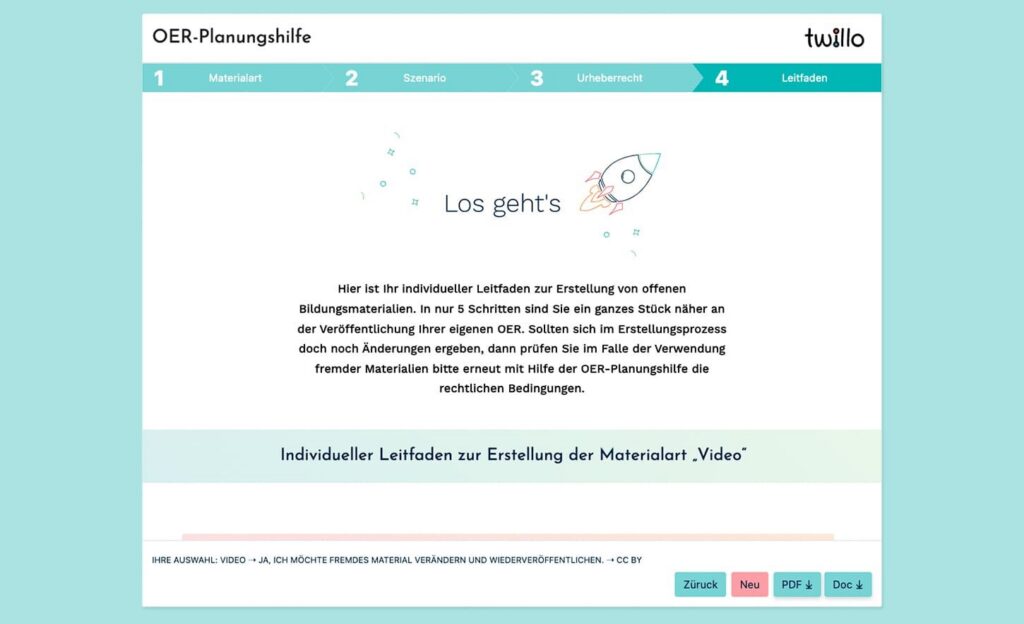
The focus of the relaunch of the OER planning aid is the revision of the wizard: The range of materials for which the OER planning aid offers support now largely follows that of the OERSI search index, as of mid-2022. By using identical terminology both in the search on twillo and during the conception of OER, a further step is to be taken to offer our visitors a uniform experience.
In the course of the revision, a description of the respective types of material will also be included in the OER planning aid and the resulting guidelines. This is because the OERSI terms offer scope for interpretation — often apparent after a brief, exemplary search. This is of course also the result of the diversity of different subject areas, disciplines and our users.
Interested parties should therefore be offered an overview of possible interpretations of the material types — as far as possible and reasonable, without any claim to completeness: The material type “simulation” can be a reference to interactivity. However, simulation can also be understood as material that documents a simulation and helps subsequent users to realize a simulation (similar to a simulation game).
How the OER planning aid works
The OER project of interested parties is determined by successively querying the parameters of a planned OER material. Potential OER creators can initially choose from almost the entire spectrum of material types that can be found in the search environment on twillo or the OERSI.
The next step is to ask whether third-party content is to be incorporated or edited in the intended work. The license of the third-party material should now be specified by the user or — in the case of the integration of third-party materials or projects to be realized without the help of third-party materials — it must be decided which license the resulting overall work should have.
Based on this input, a guide to the specific issue is compiled on an ad hoc basis.
OER planning aid: Information beyond licensing issues
In accordance with the specified parameters, license information is initially provided in the guides. However, didactic areas of application of the selected material are also discussed and design tips are provided. With regard to the material type video, it is stated, among other things, that the medium is suitable for ‘visualizing’ time and depicting processes. In the OER planning guide, 21 types of material are dealt with where didactic advice is useful. In addition, as far as the type of material allows, reference is made to tools that can be used to realize the material. File formats are discussed in which a work can be made available as OER on twillo as openly as possible.
The guidelines issued by the OER planning aid for the selected type of material and the envisaged scenario can be downloaded as a PDF and Doc file. This means that the guide can also be consulted later and, if necessary, offline during the conception and creation of an OER; additions can be made directly in the spirit of OER. The “New” button starts a new run through the OER planning aid, because after all, OER is always moving forward.
Speaking of further: We are pleased to be able to continue to support you more than ever with our OER planning aid. We look forward to your visit: Plan your OER project now.